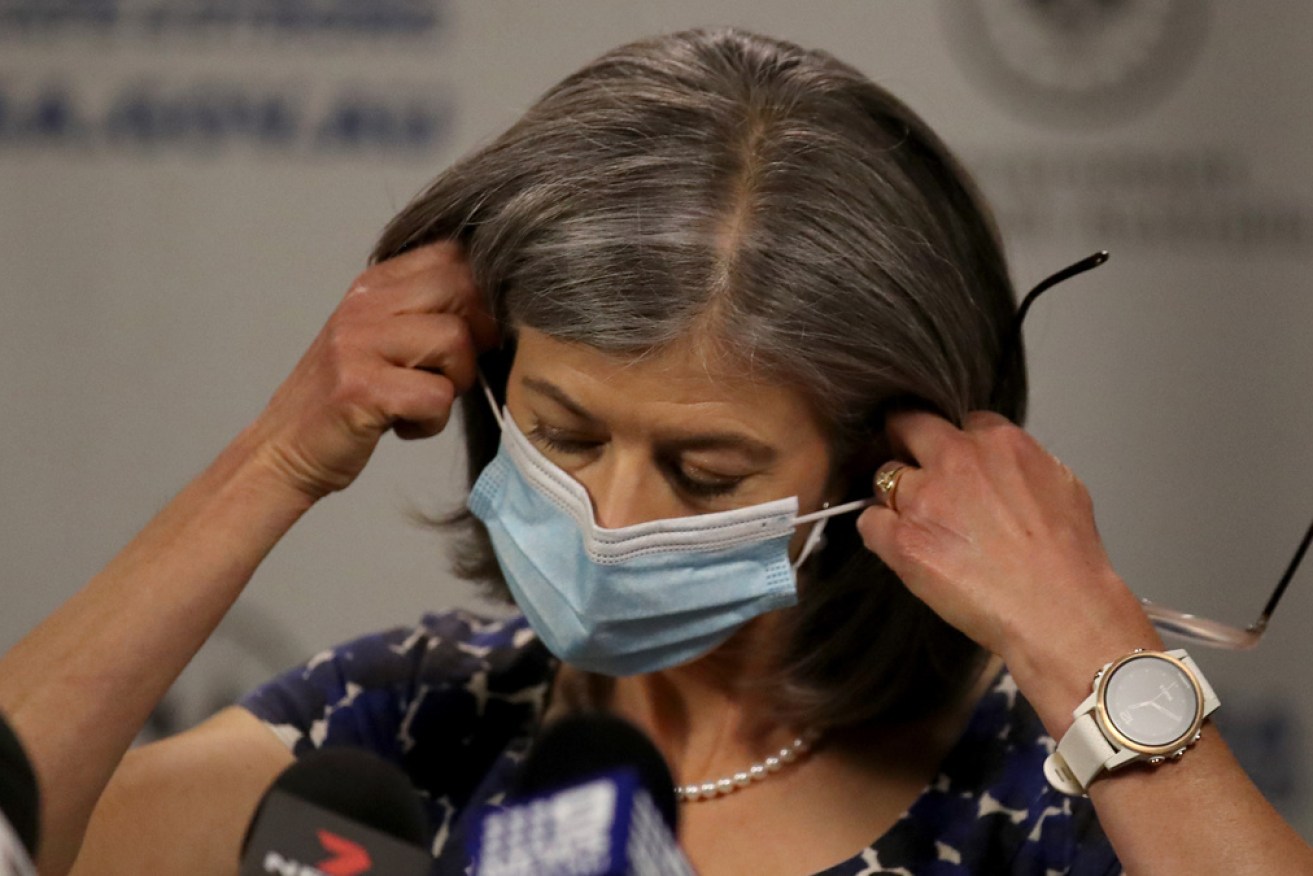‘Very tough time for South Australia’: 774 COVID cases force return of restrictions


It's too early to tell what impact the sub-variants might have, Professor Nicola Spurrier says. Photo: Getty
Rocked by skyrocketing COVID diagnoses, South Australia has revived public health restrictions while making no promises that further measures against the mutant Omicron may be needed.
Premier Steven Marshall has moved to tighten density limits and reduce family gatherings after the state posted a record 774 new infections.
Mr Marshall said speed was vital to make sure new daily infections wouldn’t rise into the thousands over the coming days and weeks as they have in NSW and Victoria, with Queensland likely to reach four figures soon.
“It will overwhelm our health systems right across the country if we don’t take action,” Mr Marshall said on Sunday. “We’ve got to swing into action to save lives.
“There is no doubt this is going to be a very tough time for South Australia.”
Indoor hospitality will go to one person per four square metres and outdoor activities will be allowed one person for every two square metres.
Gyms will be restricted to one person for every seven square metres.
Family gatherings will be reduced from 30 to 10 people.
Travellers arriving from interstate won’t need to take a PCR test before arriving but are being told to take a rapid antigen test after entering SA.
The Premier ruled out plunging the state back into lockdown but gave no guarantees about what might happen down the road.
“It’s not our intention to have a lockdown in SA, but it is our intention to significantly reduce mobility at this time until we can get more shots into the arms of South Australians,” Mr Marshall said.
Mutant strain needs three jabs
Chief Health Officer Nicola Spurrier said three jabs were needed to achieve the same level of protection against Omicron as two jabs against Delta.
“What we need to do now is put everything, every effort we can in our state to get the third dose into everybody as quickly as possible,” she said.
The time frame for booster shots will be brought forward on January 4 to four months after your second dose and will then be brought down again on January 31 to three months.
The early data indicated around 84 per cent of the state’s new cases were vaccinated and 16 per cent were unvaccinated, which mirrors the state’s vaccination rate.
Of the three people in intensive care, one is not fully vaccinated and two are. The remaining seven people in the state’s COVID-19 ward – not in intensive care – are not vaccinated.
“You can see a bit of a differential,” Professor Spurrier said.
Unvaccinated paying the price
“Even though these are small numbers (of) people that have been hospitalised, there is a high representation of people that are not vaccinated.”
Professor Spurrier said there had been exposure from a positive case in 40 aged care facilities and transmission in a further eight.
There are 35 aged care staff and 16 residents who have contracted the virus.
Thirty-two disability care sites have been exposed and four additional sites have experienced transmission. One is an Indigenous-specific site.
Forty staff and their disability care clients have contracted the virus.
There have also been exposures at 21 hospitals and four hospitals have experienced transmission.
“As we start to see these additional cases, particularly in vulnerable settings for us in SA, we will become much more concerned,” Professor Spurrier said.
There were almost 20,700 tests taken on Christmas Day.
-AAP








